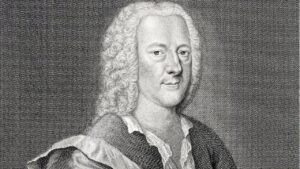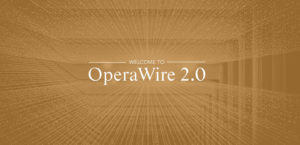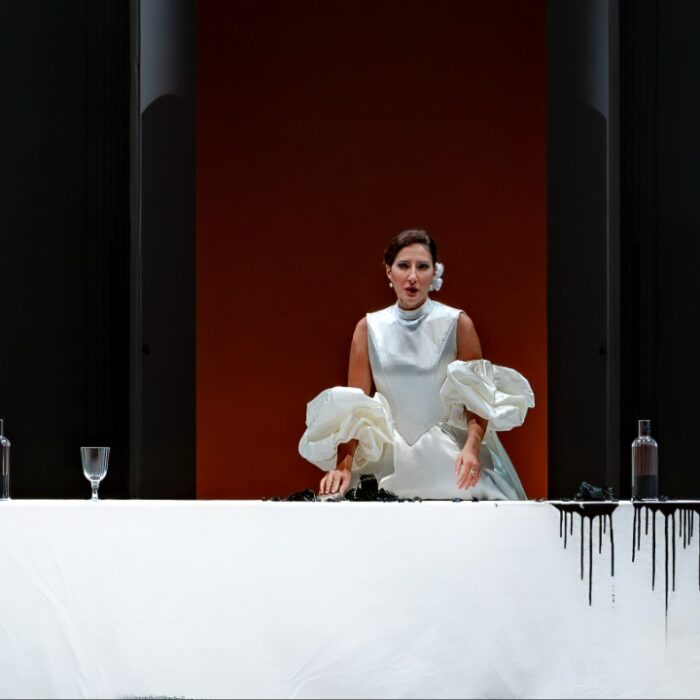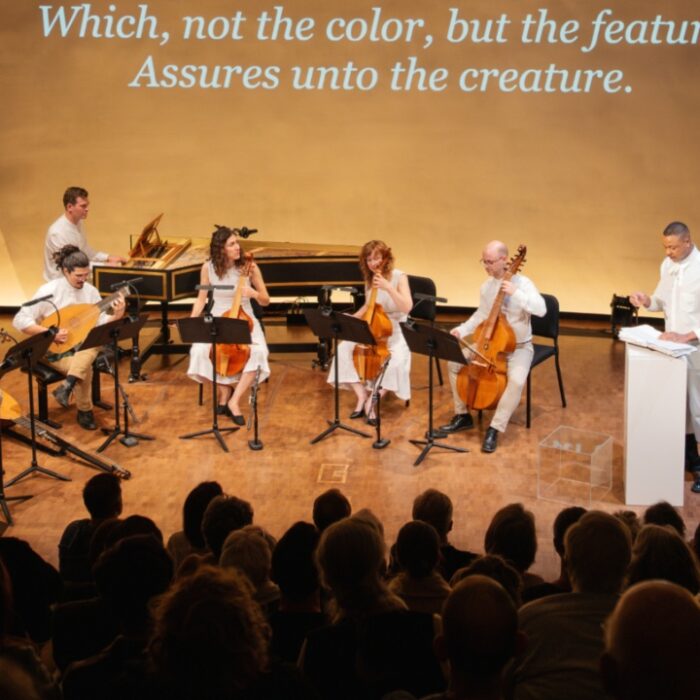
Concerto Köln 2025-26 Review: St. Michael’s Oratorio
By Mengguang Huang(Photo: Georg Lichtensteger in 1745)
At St. Michaelis Church Hamburg, with its vast interior and long reverberation, opening concerts of the Bach Weeks often feature works that exploit the acoustic space—Biber’s 53-part “Missa Salisburgensis” was a perennial choice, and this year is no exception. Telemann’s oratorio “Komm wieder, Herr, zu der Menge der Tausenden in Israel,” written for the 1762 rededication of St. Michaelis after the fire of 1750. Endebrock approached this rarely performed score with a sensible balance between civic pomp and a meditation on destruction and renewal.
Aquatic Prelude
The large oratorio was prefaced with Telemann’s “Hamburger Ebb’ und Fluth,” a water-born tribute to the city’s Admiralität. Concerto Köln tempered brilliance with breadth, taking the Overture a shade slower than usual—an astute response to the long resonance of the venue. Each dance clearly profiled—the Sarabande with noble restraint, the Harlequinade flickering in quicksilver gestures, and the Canarie and Gigue surging with buoyant vitality, all sustained by Endebrock’s seamless rhythmic flow. The brass shone with a warm, golden edge, giving the suite a ceremonial glow for its own sake.
Fire Remembered
The first recitatives of oratorio, sung by bass Tobias Berndt, carried the steady authority of a witness: eloquent yet restrained, his tone humane and declamatory. In “O würden uns Zungen der Engel verliehn!” he drew long, sculpted phrases over a continuo that pulsed like a heartbeat. The brief choral cry “Heilig ist unser Gott” and the tenor recitative that followed led directly to the fiery centerpiece “O Tag, vor dem wir noch erstaunen” which demonstrated Telemann’s capability of music painting. Here second bass Krešimir Stražanac entered with a darker resonance and gleaming projection, his line surging above strings that flickered like flame. The aria’s rhythmic drive, with restless dotted figures and agitated string figuration, vividly evoked the terror and awe of the cataclysm. Stražanac’s declamation alternated between commanding outbursts and measured, almost tremulous lines, giving the impression of both the overwhelming destructive force of the fire and the human response of shock and reverence.
From Wrath to Grace
The narrative then turned toward mercy. Soprano Magdalene Harer introduced the plea “Wer half uns aus?” with bright urgency, answered by tenor Johannes Gaubitz in his extended aria “So waren Gnad und Zorn vereinet.” His supple diction and buoyant tone traced Telemann’s theological pivot from divine anger to reconciliation.
The following ensemble recitative gathered all four soloists into a contemplative quartet of collective memory, seamlessly balanced by Concerto Köln’s gentle continuo. Then came Harer’s aria “Verstreut gewesne Herde,” a pastoral meditation on restoration: her voice floated above pliant strings whose articulation suggested motion without haste.
Praise and Reflection
In the subsequent recitative-aria group, Berndt returned with renewed gravitas—his “Es schallet deinem ersten Worte” carried the moral centre of the oratorio, its broad phrasing anchored by warm continuo and burnished trumpet colours. Berndt’s articulation balanced gravitas and clarity, letting the dotted rhythms and ascending lines convey both the weight and the luminous echo of divine proclamation, transforming the aria into a meditation on speech as sacred presence.
Stražanac answered in “Majestät, vor deren Blitz Jaspis und Saphir erbleichen” with his commanding and noble tone. The duet recitative for Marian Dijkhuizen and Gaubitz offered tender human dialogue—an exchange of reason and consolation before the chorus “Nun, unser Gott” proclaimed collective gratitude.
Memory and Consolation
Dijkhuizen’s aria “Ruht, von uns nicht weit geschieden” featured her rounded timbre and inward warmth, conveying a sense of repose. The muted brass lent a veiled sonority, —finely shaded by Concerto Köln—evoked water gently settling after fire. The penultimate dialogue recitative “Nun, o Unendlicher” unfolded at length and with a certain plainness; its reflective tone offered little scope for vocal display, though Berndt and Stražanac sustained its meditative dialogue with sincerity.
From Earth to Eternity
The choral finale “Ein Vorspiel des Tages” crystallized the evening’s vision of rebirth. Endebrock drew from his musicians radiance: trumpets in poised symmetry, timpani pulsing like a heartbeat, choral diction clear. The final blessing—“May you enhance Hamburg and Hamburg the world”—sounded less like proclamation than prayer.The closing chorale “Sei Lob und Ehr mit hohem Preis” glowed with communal warmth—an aural image of light returning to stone.
Epilogue
This interplay of water and fire, the contrast between fluid motion and spatially expansive polyphony, fully conveyed the oratorio’s deep connection to this specific building and Hamburg. Functional in origin, it reminded us that much Baroque music—like this oratorio—was created for the specific occasions of the metropolis rather than mere artistic virtuosity. Warm congratulations are due to Concerto Köln, who, despite the recent power outage at the Kölner Philharmonie that disrupted their fortieth-anniversary concert, brought such consummate artistry to this performance.
Categories
Reviews


